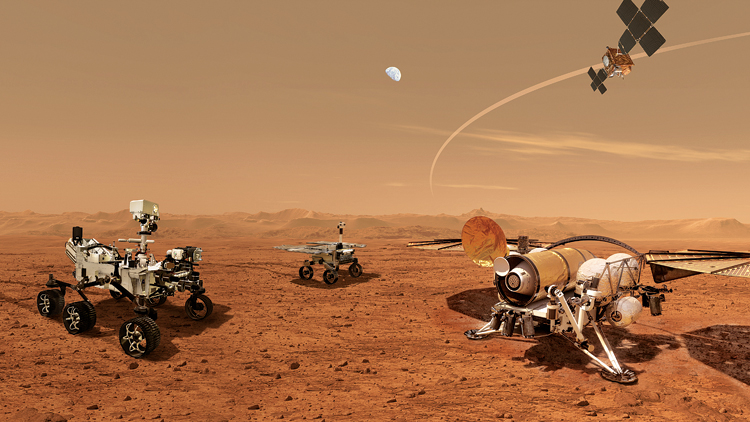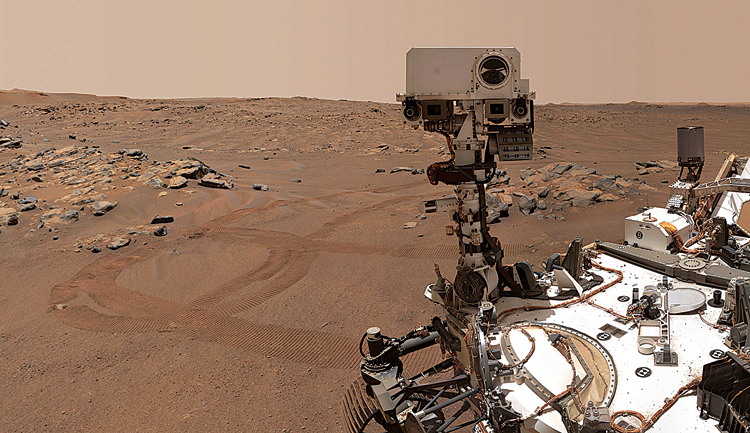INDIAN ARMED FORCES CHIEFS ON OUR RELENTLESS AND FOCUSED PUBLISHING EFFORTS

The insightful articles, inspiring narrations and analytical perspectives presented by the Editorial Team, establish an alluring connect with the reader. My compliments and best wishes to SP Guide Publications.

"Over the past 60 years, the growth of SP Guide Publications has mirrored the rising stature of Indian Navy. Its well-researched and informative magazines on Defence and Aerospace sector have served to shape an educated opinion of our military personnel, policy makers and the public alike. I wish SP's Publication team continued success, fair winds and following seas in all future endeavour!"

Since, its inception in 1964, SP Guide Publications has consistently demonstrated commitment to high-quality journalism in the aerospace and defence sectors, earning a well-deserved reputation as Asia's largest media house in this domain. I wish SP Guide Publications continued success in its pursuit of excellence.
Mars is Active & Alive: Indian Scientists
Indian scientists from PRL have found frequent seismic activities on Mars that indicate important geological action on the Martian surface

After tasting the highs of going beyond earth’s atmosphere and landing on the moon, our nearest celestial object, humans are now expanding their footprints to more celestial objects in our solar system especially the neighbouring planets. Mars has emerged as the centre of humanity’s space exploration missions during the recent decades. Ever since the first attempt was made in 1960, by then Soviet Union for a flyby mission, about 48 missions have been attempted to Mars by six space agencies up until 2020. These include the NASA (National Aeronautics and Space Administration), ESA (European Space Agency), ISRO (Indian Space Research Organisation), JAXA (Japan Aerospace Exploration Agency), former Soviet Union space program, CNSA (China National Space Administration) and UAESA (United Arab Emirates Space Agency).
From these missions, currently, there are four rovers active on Mars and about eight orbiters that are constantly sending data and images from the Red Planet. The month of February saw an extended focus around the Red Planet as last year the latest of Mars’ missions reached the planet in February. Not one but three of them made it to the planet from NASA, CNSA, and UAESA. NASA’s latest rover Perseverance is a crucial mission that marks the beginning of the next step in inter-planetary missions by bringing back samples from Mars, testing in-situ technologies, looking for ancient signs of microbial life and contributing to helping humans prepare for their visit to Mars. Given the similarities Mars shares with Earth, it is believed to be an important thread in understanding our planet’s past and even the future of the planet and humanity itself.
Among the most recent chatter around the red planet was that from Indian Scientists who stated “Mars is alive”, detecting some natural forces at work beyond the man-made machines taking rounds. In a recently published research, scientists at the Physical Research Laboratory (PRL) in Ahmedabad, India spotted thousands of tracks on the Martian surface created by tumbling boulders. These boulder tracks can be used to pinpoint recent seismic activity on the planet. Seismic activities are basically the types, size, and frequency of earthquakes in a certain area over a period of time.
Dr S. Vijayan, Assistant Professor with the Planetary Science Division at the Physical Research Laboratory, who led the research said, “Mars is currently active.” The study was published in Geophysical Research Letters stated that it takes about two to four Martian years (four to eight Earth years) for these boulder tracks to disappear, whereas on Earth they are rarely preserved. These ejections and tracks can be used to recognise very recent surface processes on planetary surfaces.

Every time a boulder falls, the material on the surface of Mars, the regolith is propelled in a unique pattern with every bounce of the boulder. These patterns appear V-shaped on the red Planet, with the spread pointing downslope and the spacing between each bounce is non-uniform. The report has come across 4,500 such herringbone-like patterns of tracks on the surface of Mars that are formed by the bouncing of boulders, spotted in the nearly 900-kilometre length of the surface. 30 per cent of these ejections are observed in the Cerberus Fossae region, which suggests it is one of the most seismically active regions on Mars. Led by Vijayan, the researchers glanced over thousands of images captured from 2006 through 2020 by the High-Resolution Imaging Science Experiment (HiRISE) camera onboard Nasa’s Mars Reconnaissance Orbiter that helped them find unique tracks all over indicating recent activity on the planet. The scientists believe this to be a good indicator for geologically active regions.
When it comes to geological activity, seismic waves are key to understanding the deep layers of Martian composition. This new research about the activity further adds to the intricacies of our understanding about the Mars as we discover more and more about it while approaching plans to settle on it in the future.
Another recent research by PRL scientists noted that since harsh conditions would have precluded any possible aerobic evolution of life at the martian surface, it is plausible that martian life, should it exist, would have evolved in such a way as to derive energy from more optimum resources. The research abstract further added that iron is one of the most abundant elements present in the martian crust and occurs at about twice the amount present on Earth. Clay minerals contribute to about half the iron found in soils and sediments. On Earth, clay acts as an electron donor as well as an acceptor in the carbon cycles and thereby supports a wide variety of metabolic reactions. “In this context, we consider the potential of Fe/Mg smectites, one of the most widely reported hydrated minerals on Mars, for preservation of macro- and microscopic bio-signatures.”Thus the scientists have been delving deeper to understand the environmental conditions and also explore the possibility of bio signatures and their identification within the Mars 2020 landing site (Jezero Crater) by using the astrobiological payloads on board the Perseverance rover. NASA’s Perseverance Rover has now spent over one Earth year studying the surface at the site and even collecting samples from the Martian surface to be returned to Earth. At the time of this report, the rover had spent over 366 SOLS on Mars and has taken over 2,00,000 raw images. A Martian dayor Sol- is 24 hours and 37 minutes long.
NASA and the ESA are working to plan ways to bring the first samples of Mars rock and broken rock/dust back to Earth for detailed study. The Mars Perseverance rover is the first leg of this international interplanetary relay team. One of its major job is to collect and cache samples on Mars. Two Mars Sample Return missions are planned to follow in Perseverance’s footsteps to the vicinity of Jezero Crater. The first would land near or in Jezero, collect and then launch the sample cache off the Red Planet. The second would capture it in Mars orbit, and then bring it back to Earth safely and securely in the early to mid-2030s. Scientists believe that these first collected and returned samples could answer a key question: did life ever exist on Mars? Only by bringing the samples back can we truly answer the question by using the most sophisticated, state-of-the-art labs, at a time when future generations can study them using techniques yet to be invented.
From a fictional reality to a factual preparation, the journey with Mars has advanced over the past decades and in the year to come there is more that it is going to witness, as huge leap in humans’ space exploration missions.





